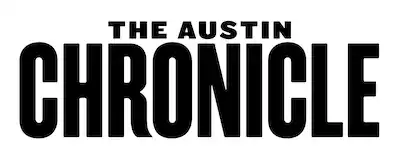https://www.austinchronicle.com/news/2002-01-25/84466/
Not Empowered Yet
By Mike Clark-Madison, January 25, 2002, News
Leaders from the Greater Austin Chamber of Commerce and neighborhoods within the proposed EZ boundary say they still plan to assemble the "coordinating council" that would have overseen EZ-related activities. Even though there is no zone to oversee, "there was a lot of good networking going on," says Lori C.-Renteria of the East Cesar Chavez Neighborhood Planning Team. "There are some really good people at the Chamber right now, and their intentions are good, and they're interested in doing the right things. And they have the right connections with businesses and community leaders, but they're not really connected to people in the neighborhoods."
The coordinating council's projected 29 members would include reps from each of the 14 neighborhood planning areas in the proposed EZ, stretching from Chestnut to Montopolis. With additional at-large members, citizen reps would comprise a simple majority over business-community reps. The council would promote the four main EZ goals -- economic opportunity, workforce development, sustainable neighborhoods, and affordable housing -- "particularly between neighborhoods and the other entities that interact with them over these goals," says outgoing Chamber president Susan Dawson, the prime mover behind the EZ effort.
"The council could consolidate information about its goals and keep the momentum going. In particular, on an economic-development front, the neighborhood planning groups have requested help," Dawson continues, "because they either didn't have the tools or the people to move these efforts along. How do you understand what's available? An empowerment zone has a whole host of tools, but even without that, you have things out there that economic-development people have access to every day."
This may sound like a make-work project for people who don't have enough meetings already, but the bridge-building between downtown business types and Eastside neighborhoods is notable.
The EZ application process, which included a hefty load of paperwork and letters of support from residents and businesses within the zone boundaries, itself went through some rocky times. Leaders of El Concilio (a coalition of East Austin neighborhood associations), the Guadalupe neighborhood, and other East Austin groups were (and still are) mistrustful of the Chamber and wary of Westside businesses coming to destroy their neighborhoods in the name of "development," and withheld or only grudgingly offered their support.
Reversing that cynicism, and moving forward to help East Austin even without the EZ designation, will require continued financial and organizational commitment from the Chamber. Renteria, Austin Neighborhoods Council President Jim Walker, and other observers wonder whether the end of Dawson's term as president means an end to Chamber interest in their issues. But Dawson herself does not share this concern. "I know that at both a staff level and a volunteer level," she says, "we want to move forward on this and keep it part of our efforts and goals."
The Chamber has proposed helping to resolve the often-murky title situations in East Austin, where people too often find they don't actually own -- or can't sell -- the home they've lived in for decades, or that was left to them by their parents. As long as this and other Chamber-sponsored activities support real affordable housing and not just turning property over for gentrification, it's "the kind of act that allows you to start building trust," Walker says. "It needs to be something from which they don't get any direct gain. Those kind of efforts will start the process of working together."
For the record, the seven new empowerment zones are in San Antonio, Oklahoma City, Little Rock and environs, Jacksonville, Fresno, and both Syracuse and Yonkers in New York. According to the HUD, these communities were chosen based upon "their ability to maximize the benefits" of EZ designation -- an assessment based both on demographics and "the quality of the community's strategic plan." Given that Austin has no such plan, and that despite Eastside poverty and a downturn, our fair city still possesses startling wealth (well, compared to Syracuse or Fresno), it makes sense we were told "better luck next time." No word yet from HUD on when that next time might be.
Copyright © 2025 Austin Chronicle Corporation. All rights reserved.
